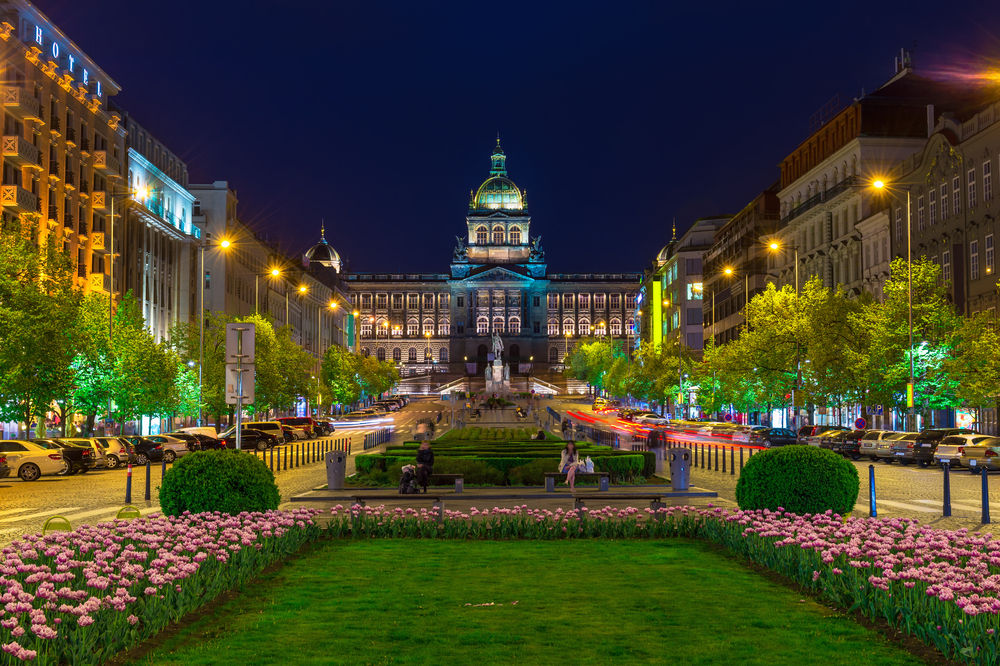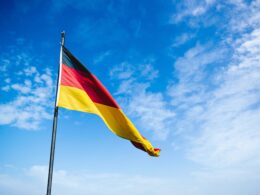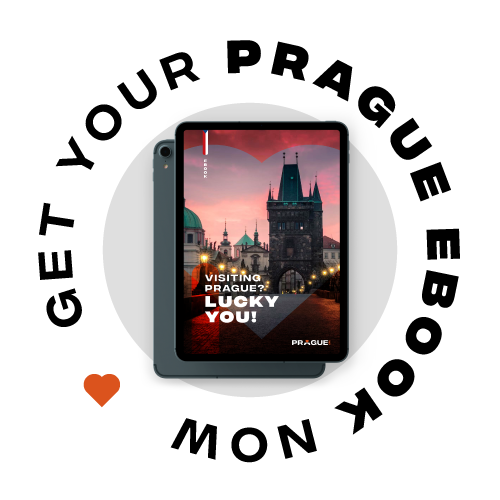Table of contents Show
Czech name: Václavské náměstí
Wenceslas Square in the heart of Prague is not only a bustling hub for fast food and shopping but also a significant historical site in the Czech lands, named after Saint Wenceslas, the patron saint of Bohemia, and overlooked by the majestic National Museum building. Its upper part features elegant Neo-Renaissance architecture, adding a touch of timeless beauty to this iconic square.
History of the Wenceslas Square in Prague
In the heart of the New Town of Prague, Wenceslas Square also known as Václavské náměstí serves as a hub for the city’s commercial and cultural districts. It was a popular gathering place for Czech nationalists during the Czech National Revival in the 19th century. It has served as the site of numerous important historical events and is still frequently used for these purposes as well as for parades, festivals, and other public meetings. St. Wenceslas Square honors the patron saint of Bohemia with its name..
Saint Wenceslas square was renamed Koňský trh (Koňský trh = Horse Market) in 1848 at the suggestion of Karel Havlek Borovsk. Previously, it had been known as Horse Market for its regular hosting of horse markets during the Middle Ages.
In 1913, the Czech sculptor and medalist Josef Václav Myslbek fashioned a bronze figure of Saint Wenceslas on horseback. It was situated at the top of the square close to the National Museum, constructed from 1885 to 1890.
In fact, the Prague Museum which is part of the square offers insight into the history of Wenceslas Square. At one time this famous square was known as the Horse Market. However, the name was changed to Wenceslas Square to honor Wenceslas, Duke of Bohemia. He had a difficult life due to the political climate of Europe during this period of history and was murdered at the hands of his brother. He is the Czech patron and is remembered for his kind soul and work to help those less fortunate. The statue of Saint Wenceslas is proudly on display in Wenceslas Square and is one of the area’s greatest attractions.
Furthermore, the Prague National Museum can also help unravel even more history of the Czech Republic that has taken place in this square. It is often noted that most of the important historical and political events of the country have taken place in the square. It was the site of the declaration of the first Czechoslovak Republic in 1918. And in 1968 there was a Prague uprising against the Soviet Union invasion by student Jan Palach: it was a major site of protests against the Warsaw Pact. He set himself on fire in protest against injustices and succumbed to his injuries. And Wenceslas Square also prominently held celebrations for the fall of Communism in 1989.
The Communist administration in what was then Czechoslovakia was toppled by the “Velvet Revolution,” which began in 1989. Over two hundred fifty thousand people showed up for the largest protests.
This square is the beating heart of modern-day Prague, home to a wide variety of businesses and attractions. It stretches for 750 meters, with a width of 63 meters at its peak and 48 meters at its base.
Where is Wenceslas Square & How to Get There
The place is located in the centre of Prague. Getting to the Wenceslas Square area requires just a short trip on the metro. Most of the city’s metro lines cross beneath its path. However, the A line metro train is recommended to get to the square. The two busiest stops in Prague coincide with Wenceslas Square and are named Muzeum and Můstek. After exiting the metro station there are numerous signs to help guide visitors to Wenceslas Square, Prague’s main boulevard.

Opening Hours & Entry to the Square
While it’s technically called Wenceslas Square, it is actually a boulevard that is free and open daily to the public. Created by King Charles the IV in 1348, it has been a mainstay of Prague life since its inception. It is possible to visit the area anytime. However, a visit might be best saved for the daytime to see the sights in the best light or an evening visit for an epicurean gathering of family and friends.
What is Wenceslas Square famous for?
The square is one of the most recognised city squares in the city. This two-tiered pedestrian plaza is home to many cafes, shops and offices. One of the best aspects of visiting the square is that it is located adjacent to the National Prague Museum. The Prague National Museum houses varied artifacts that hold the keys to unlocking the often-infamous history of the country. The Prague Museum is known for its vast collection of Czech artifacts dating back several centuries and hosts multiple cultural programs throughout the year.
What is there to do
Bordered by the Prague National Museum on one side and Na Příkopě Street that connects to Republic Square, there are numerous interesting things to do and see at the Wenceslas Square Prague. The opera is only a few blocks away and the restaurants are some of the best in the city. It’s important to note that Na Příkopě Street also divides Old Town from New Town. The street and the Square both serve as great geographical reference points when walking around the town. It is also easy to get to almost anywhere in Prague from this place. And it is often used as a meeting point for friends, family, and tourist groups.

Things to do in Wenceslas Square area
No trip to Prague would be complete without a visit to Wenceslas Square. It is the main square in Prague and is located in New Town in a busy part of the city. It’s an amazing location filled with shops, businesses, and residences alike. The hustle and bustle of the area are sure to offer a little something for everyone in your travel group. It also offers some of the best people-watching around. Over the years it has been used as a parade site and has hosted several of Prague’s controversial and celebratory events.
One of the highlights of the square is the Muccha Museum, which houses a collection of works by the Czech Art Nouveau painter Alphonse Mucha. The museum features some of Mucha’s most famous works, including his iconic posters for the actress Sarah Bernhardt and his series of paintings known as The Slav Epic. Visitors can learn about Mucha’s life and artistic vision, and admire his beautiful and intricate designs, which are characterized by their flowing lines, vibrant colors, and romantic themes.
And during Christmas, It’s impossible to visit the Christmas market at Wenceslas Square, Prague, and not feel the holiday mood.
Wenceslas Square: The Heart of Prague’s Culture, History, and Charm
The statue of St. Wenceslas is a national symbol of the Czech Republic, representing the country’s patron saint and serving as a focal point of the Czech National Museum.
Stay in the heart of Prague’s vibrant city center and immerse yourself in the rich history and culture of the city with our selection of hotels located in the iconic Wenceslas Square, offering convenient access to top attractions, restaurants, and nightlife.





